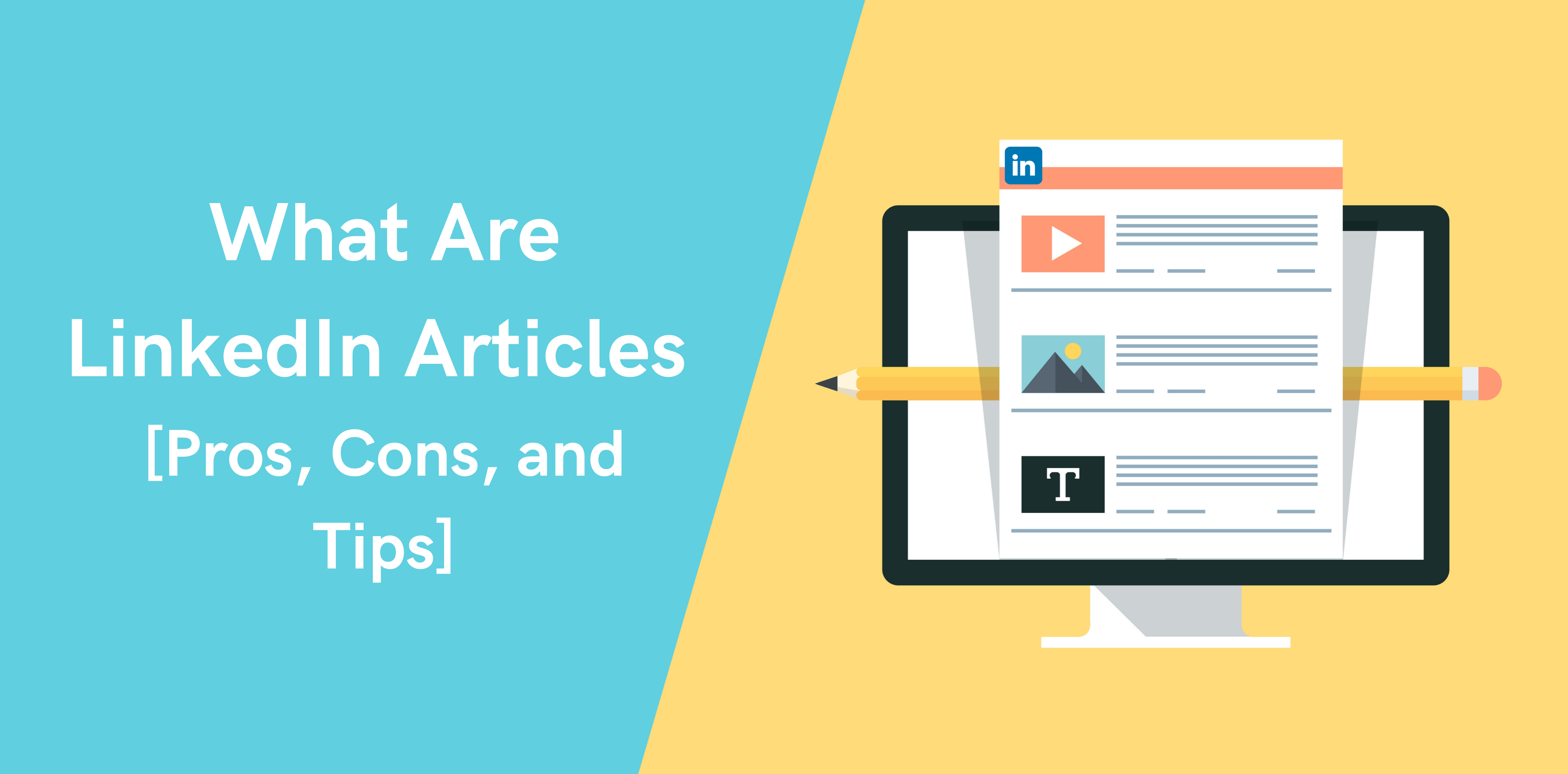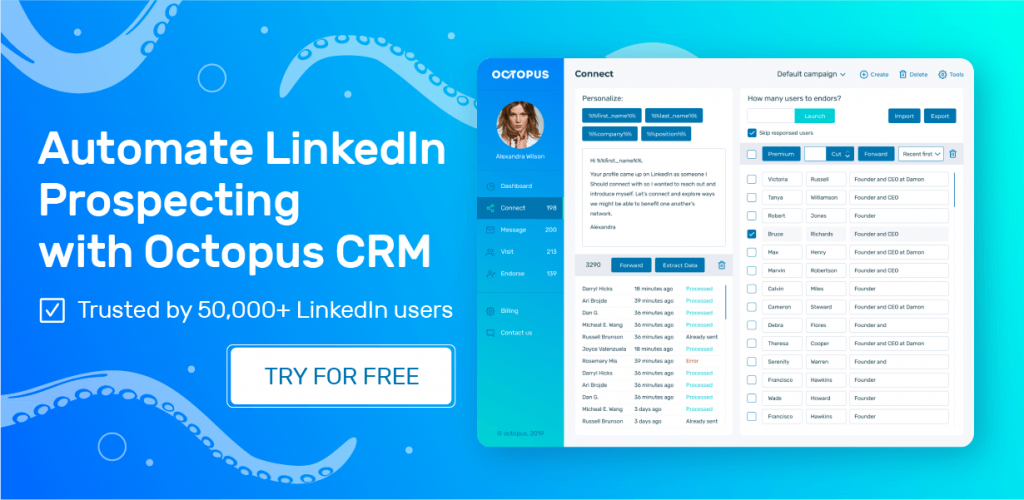Publishing content on such an influential platform like LinkedIn generates extensive exposure, helping recruiters, B2B sales professionals, and influencers to gain a firm footing in the digital landscape.
LinkedIn articles are one of many content features that the network offers you to increase your reach and visibility, build brand awareness, establish authority, and spark engagement. In a nutshell, writing LinkedIn articles can help you avail yourself more career or business opportunities down the line.
This guide will walk you through everything you want to learn about LinkedIn articles.
What Is a LinkedIn Article?
A LinkedIn article is long-form content that you can directly create and publish on LinkedIn using the network’s own powerful publishing tools. The character limit for these articles is 125,000, roughly 18,000-25,000 words.
LinkedIn articles resemble regular blog posts because both are comprehensive, covering nearly all elements or aspects of the topic in question.
LinkedIn has a dedicated platform for publishing articles called the LinkedIn Publisher, which can be used straight away without any activation. The best part is that it is open to every LinkedIn user, including basic account holders.
As a beginner, developing topics for your articles might be confusing. If you are wondering about the best LinkedIn articles, here’re some areas you should consider covering in your articles:
- Thought leadership articles in your niche or industry;
- Professional experiences and anecdotes;
- Industry insights and expertise;
- Advice for other professionals;
- Opinions on developments in your field;
- Content marketing messages in support of your brand.
Check the new LinkedIn feature called Collaborative Articles. Discover what are collaborative articles on LinkedIn and how to use it.
Where to Find LinkedIn Articles?
As someone new to LinkedIn articles, you want to know the steps of searching for LinkedIn articles on your profile or someone else’s profile. The good news is that it is super easy to view your or any other person’s writings in a few quick steps explained below:
Viewing Your Articles
There are two ways to view your articles.
The first is to view them through the LinkedIn Publisher itself. To do that:
- Click on Write an Article near the top of your LinkedIn homepage;

- Click the Publishing Menu from the dropdown menu on the upper left of the publishing tool and select My Articles.
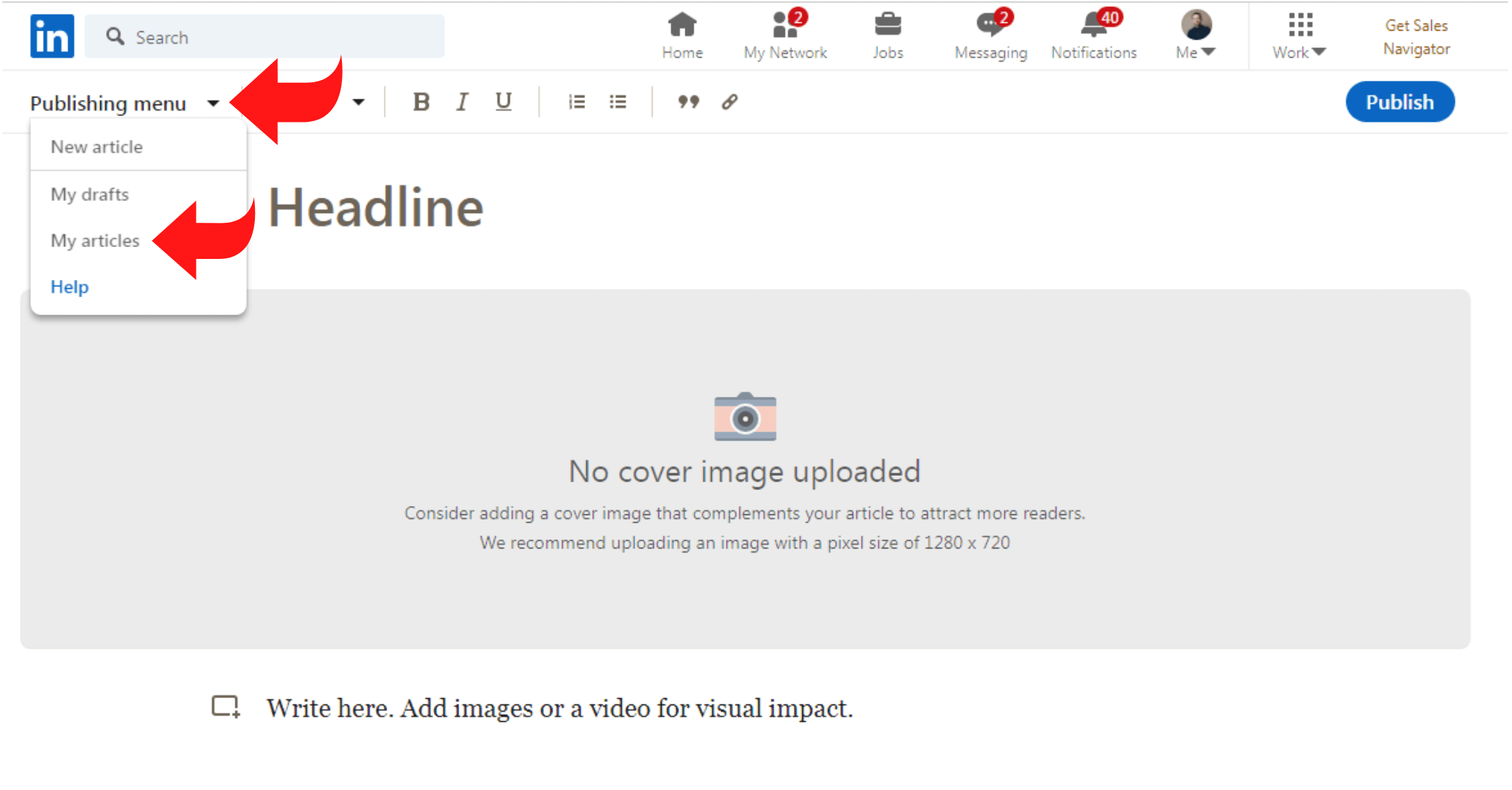
This will reveal all the articles you have published on LinkedIn.
The second way is to access your articles from your profile. Here’s how you can do it:
- Click the Me icon at the top of your LinkedIn homepage;
- Click View Profile;
- Scroll down to the Activity Section;
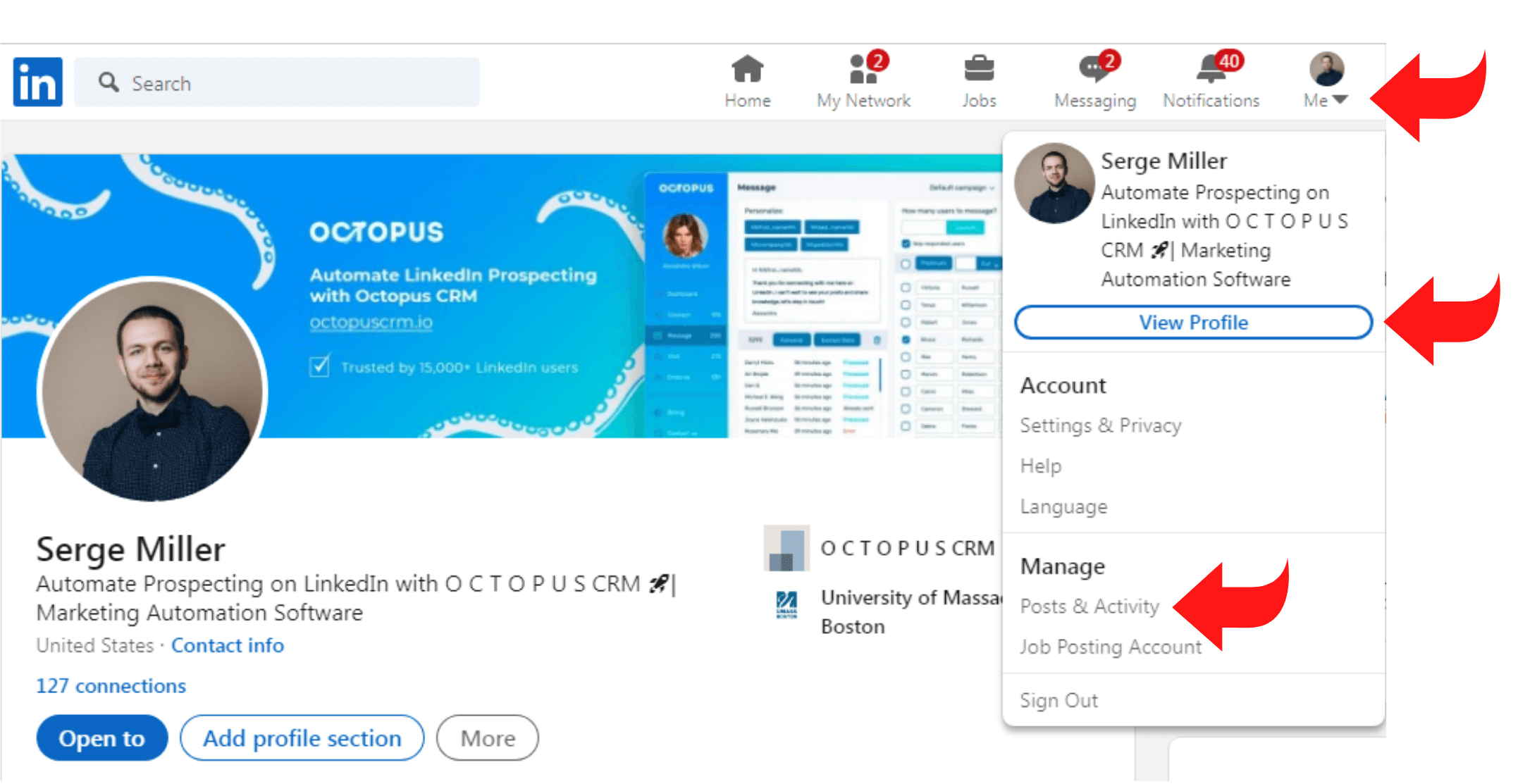
- Click See All on the right;
- Click the Articles tab at the top of the page to view your articles.
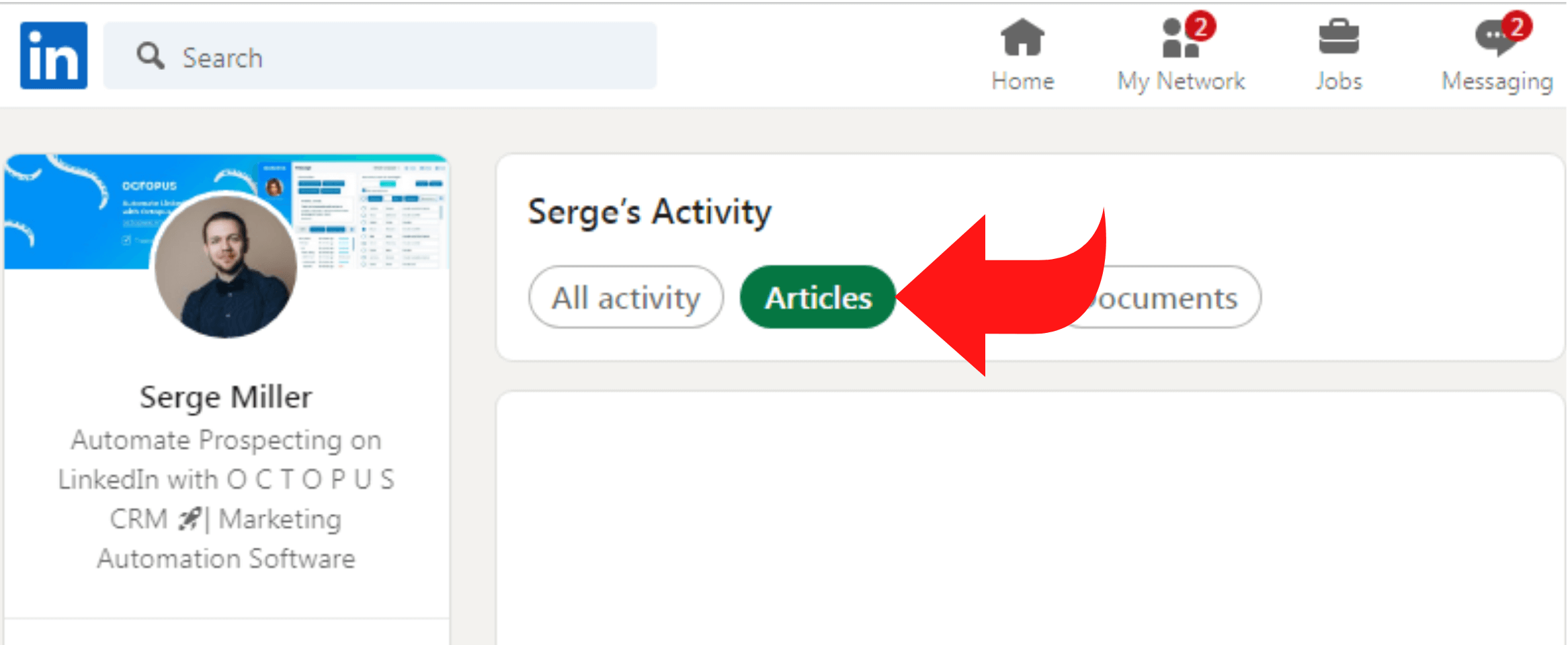
Viewing Others’ Articles
Want to view some other person’s LinkedIn articles? Follow the steps below:
- Open any LinkedIn article you want to read;
- Click the link appearing to the person’s byline.
Doing so will show you all their articles on the LinkedIn Publisher. If you’re on your phone, swiping left will take you to their next article.
Pros and Cons of Writing LinkedIn Articles vs LinkedIn Posts
So, what is the difference between posts and articles on LinkedIn?
Fundamentally, it comes down to your needs. But, knowing the pros and cons of articles compared to posts will help you choose the right option.
Pros of LinkedIn Articles vs Posts
Writing LinkedIn articles has multiple benefits; two of the most prominent ones are mentioned below.
Greater Upper Character Limit
Writing articles on LinkedIn means you can use the much higher upper character limit of 125,000 characters to write in-depth content. This allows you to explain your thoughts clearly and comprehensively to your target audience. Besides, you get the opportunity to answer all questions or explain the topic in detail, ensuring no confusion or questions are left in the readers’ minds.
In contrast, LinkedIn posts have a limit of 3,000 characters, implying your content might lack the depth required to engage people and get your point across effectively.
Read also: Formatting LinkedIn Post
Prolonged Visibility
Writing articles instead of posts also means more search engine visibility. In the long run, articles have much better chances of staying relevant. For instance, people searching 2 years after you’ve published your article might come across it (through google SERP or your LinkedIn profile).
On the contrary, LinkedIn Posts are short-lived. They might be engaging in the short term, but they stop appearing soon as other engaging posts make their mark.
Cons of LinkedIn Articles vs Posts
Just because articles are more detailed doesn’t necessarily mean they have the edge over posts in every department. Let’s find out their drawbacks compared to LinkedIn posts.
Time-Consuming to Produce
Since articles are relatively much more time-consuming to produce, you can’t publish them as frequently as LinkedIn posts. With millions of brands posting multiple types of content daily, you risk losing visibility if you don’t keep up with them.
Besides, research indicates that people’s attention span has shrunk by 25% since 2000. The shorter format of posts ensures higher chances of people reading and engaging with your posts without getting distracted.
Restricted in Terms of Feedback
LinkedIn articles don’t generate immediate feedback like in the case of posts. You can create a poll in your posts, naturally attracting more people. This allows you to gather quality feedback from your audience, helping you know what people think about your content. Further, LinkedIn articles are lengthy, so reading and engaging with the content might take a while.
Pros & Cons of LinkedIn Articles vs Blog Posts
Blogs are a popular option for publishing content without using LinkedIn publishing tools. Basically, you write the blog posts on other platforms, and you can share them on LinkedIn. But are blogs as effective as LinkedIn articles? Let’s have a look!
Pros of LinkedIn Articles vs Blogs
Higher Visibility at Greater Convenience
Since millions of people use LinkedIn, it means more exposure as lots of people will find and read your articles over time without you necessarily promoting your content. On top of that, when you publish articles on LinkedIn, it is super easy for your connections to directly read those articles without getting redirected to another platform.
On the other hand, blog posts might lead to limited audiences if your content is not SEO friendly or your blog has low domain authority. Also, it takes much time for blogs to rank in search engines and draw noticeable traffic.
Lesser Complexity
You don’t need to maintain a blogging platform or website while publishing LinkedIn articles. For instance, setting up your blog, installing plug-ins, updating tools, and checking spam can be time-consuming. But when it comes to LinkedIn articles, the network handles everything for you so you can focus only on producing quality content.
Cons of LinkedIn Articles vs Blogs
The above-stated benefits of LinkedIn articles come at a cost. So, let’s be mindful of the complete picture by discussing some of their limitations.
Lesser Freedom and Control
Publishing LinkedIn articles robs you of the freedom in terms of font sizes, font styles, or image sizes. In other words, it limits your creativity which you might otherwise use to create engaging content.
Blogs, on the other hand, guarantee more freedom over your content. In addition to control over fonts and images, you can attach all kinds of forms, pools, and tables to your blog posts. Plus, if you’re selling any products or services, you can direct people towards those pages from your blog posts.
Higher Competition and Unpredictability
When it comes to your blog, you are the only person posting content. This makes it easier to get visibility and engagement in your specific niche. However, publishing on LinkedIn means competing against hundreds of thousands of content producers. On top of it, you would be trying your luck against a complex LinkedIn algorithm that combines the heavy competition of google search engines and unpredictability like a Facebook newsfeed.
Tips for Writing, Publishing, and Promoting LinkedIn Articles
Let us discuss some of the essential tips you can follow to write better articles and publish and promote them effectively.
Engaging Writing Style
- As you start, make sure your heading is engaging but not sensationalist. It should attract attention while being sophisticated;
- Evidence suggests that articles containing 2,000-3,000 words perform better than shorter ones. But, expanding the word count shouldn’t compromise quality. You should still stay relevant to the topic and write what really matters;
- Adding images such as an appealing cover can transform the look of your content. Plus, it is a good idea to include questions & quotes to improve the performance of your content;
- The ending should always contain a call to action so that your article has good chances of creating the desired conversions.
Tools and Techniques
- As for any social media platform, the time at which you publish your LinkedIn article is crucial. For example, mornings are usually busy, but more people surf LinkedIn in the afternoon or evening;
- LinkedIn has a dedicated index called the Social Selling Index (SSI), which tells you about the areas where you’re lagging behind. You can use it to make improvements to your content;
- Also, use relevant hashtags since LinkedIn works a lot like other social media platforms where hashtags matter. But don’t go overboard with hashtags, as more than 4 hashtags per article may annoy the readers.
